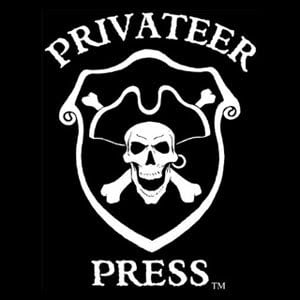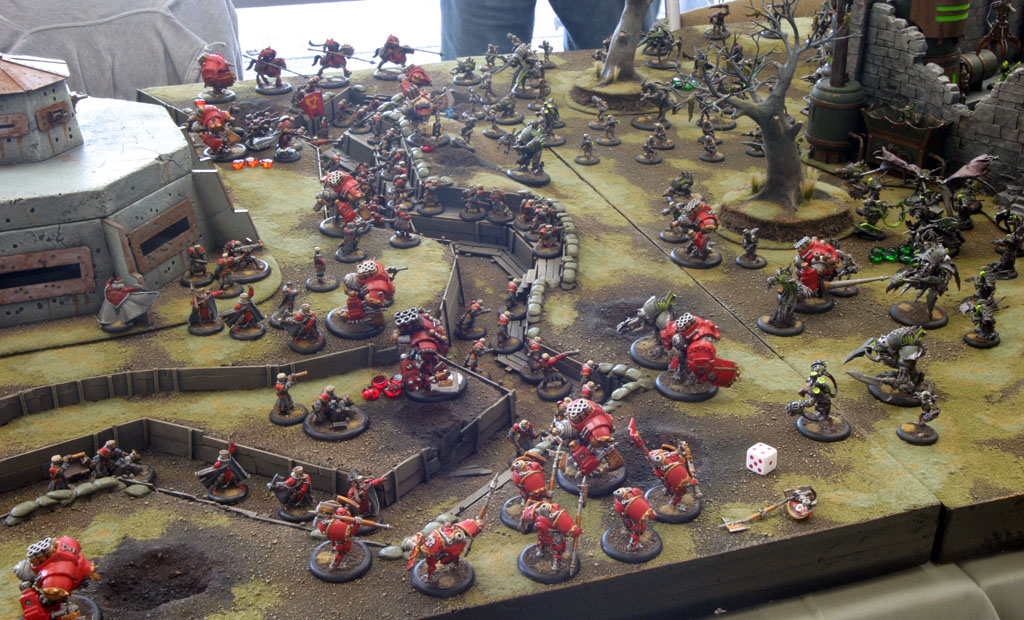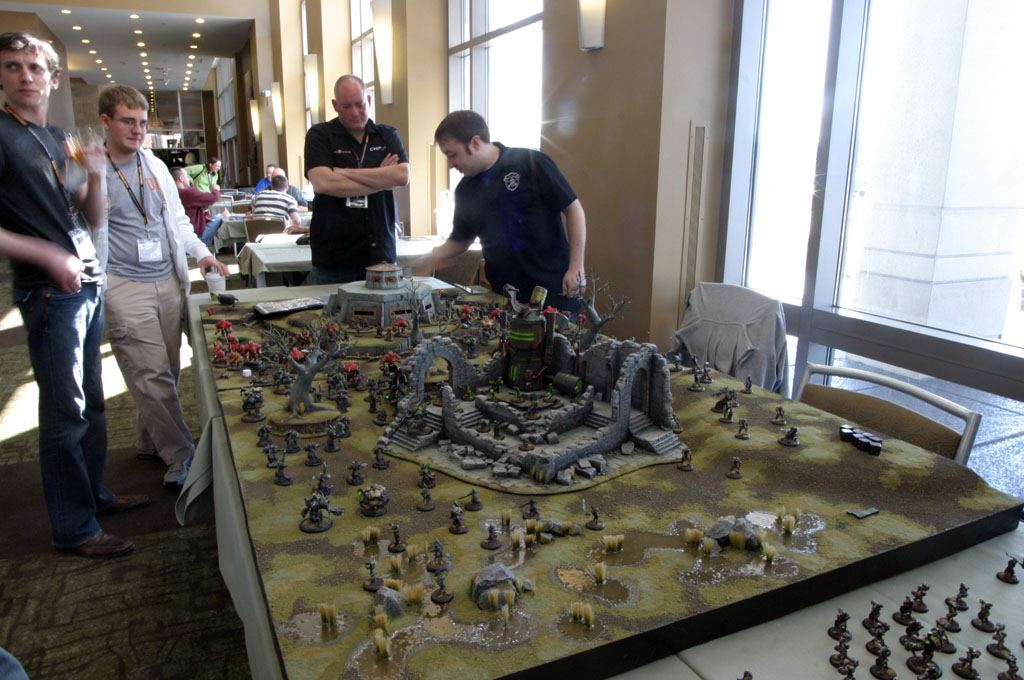Warmachine: Unbound Rules Review

I admit it, I like large battles. I enjoy the thrill of taking the reigns of an entire army. It’s why I like Epic: Armageddon, Flames of War, why I have a collection of old Avalon Hill games, and heck, one of the reasons I play Tyranids. The small, skirmish-level feel of Warmachine is fun……but there’s always something missing. I’m also a “collector” of armies. I don’t collect multiple tournament-sized lists, I pick one or two forces I really like, and go out and get everything for those forces, sometimes multiples of everything. For Warmachine & Hordes, my chosen faction is Legion of Everblight (someday I’ll get those Skorne going).
Early Days
Large games in Warmachine have always been possible. Back in the heady days of Escalation, the books seemed to be pushing people towards two and three caster battles. But…..those never took off. Multi-caster games are dramatically more complex. There are so many more combo’s available and things to keep track of. Players liked getting in faster 1-caster duels. Combined with a growing tournament scene, and large games of Warmachine became a rarity in most gaming stores.
Now comes Unbound. It’s a casual ruleset designed to make large-scale Warmachine games quick and fun, with no long downtime between turns. This is not “Apocalypse for Warmachine”. There are no superheavies or ultra-jacks. Think of it more like a rules tweak to help keep those large games moving.
Unbound Basics:
The system is designed for a minimum of 3 casters per side and two or more players. It works for both Warmachine & Hordes. Armies/teams & lists are chosen as normal. Technically, everything on a team should be of the same faction, or mercs/minions that will work with the main faction. However, I see no reason why you couldn’t break that rule. PP says up front that Unbound is for non-competitive play, so who really cares if you’ve got a Circle-Khador alliance vs. Legion & Cryx. Simply state up front that any spell/ability/feat which affects friendly models works for everyone, anything that affects friendly faction models only works for your own models. The combos will get even crazier, but it is a casual game after all.
Back to the actual rules. Both sides roll off and deploy in 10″ deployment zones and take the first turn as in Steamroller play. But here’s where the rules get interesting. Instead of activating an entire side, and having the other side sit around for 30-40 minutes doing nothing but marking damage and removing models (not to mention the super crazy ability stacking), players/teams alternate activating one battlegroup and some units/solos/etc, in what I think of as “pulses”. So if I were going first in a 150 point game, I would activate one of my Warlocks with his/her battlegroup, as well as some infantry units and solos. Then you would activate one of your battlegroups and some units. Play would go back to me for a 2nd “pulse”, then to you again, and back and forth until everything has activated. It’s actually very similar to Epic, or chess, where each player moves one piece of their force at a time, giving the other player a chance to react, before moving the next piece. There are a number of “pulses” equal to the number of starting casters plus one. So a 150 point, 3-caster game would have 4 “pulses” per side, with the last pulse being the time to activate any models that didn’t activate earlier.
There are some other rules, such as limits on the number of units that can activate with a battlegroup, not allowing units to activate last in one round, and first in the next, and tweaks to when focus is handed out and how long some abilities last. Also. each round of play, the turn order can change, meaning I could start the game going 1st, but in round 2, you could roll highest and go first. There are modifiers to that initiative roll based on controlling sections of the board.
The tactical opportunities come in trying to out-think your opponent. You get the chance to pull off some pretty nasty moves, but the limit on the number of units that can activate alongside a battlegroup keep them from being too insane. The rules keep players involved in the game, by effectively having multiple short turns within a larger round of play. I can’t count the number of Apocalypse games which really started dragging on, leaving 1/2 the players bored for 45 minutes at a time (one reason we use a stopwatch in the WargamesCon Narrative events). This idea of keeping everyone involved is key, and one reason I think this rules system will be popular.





